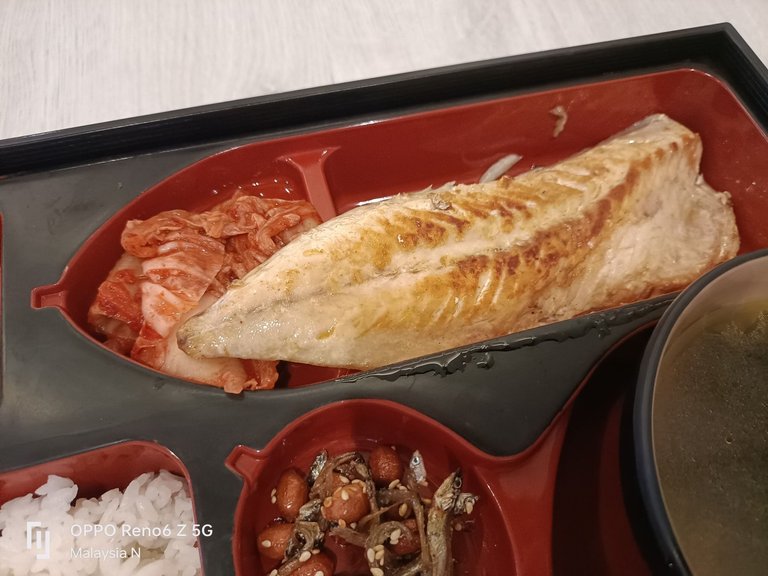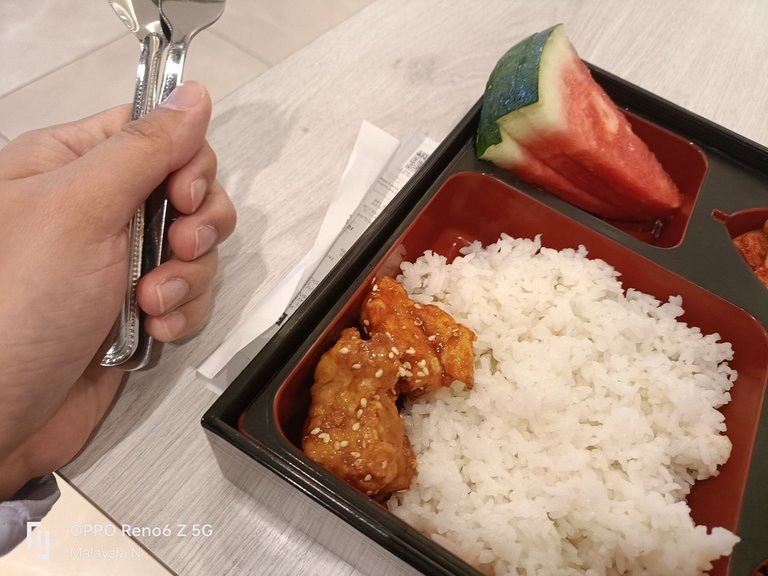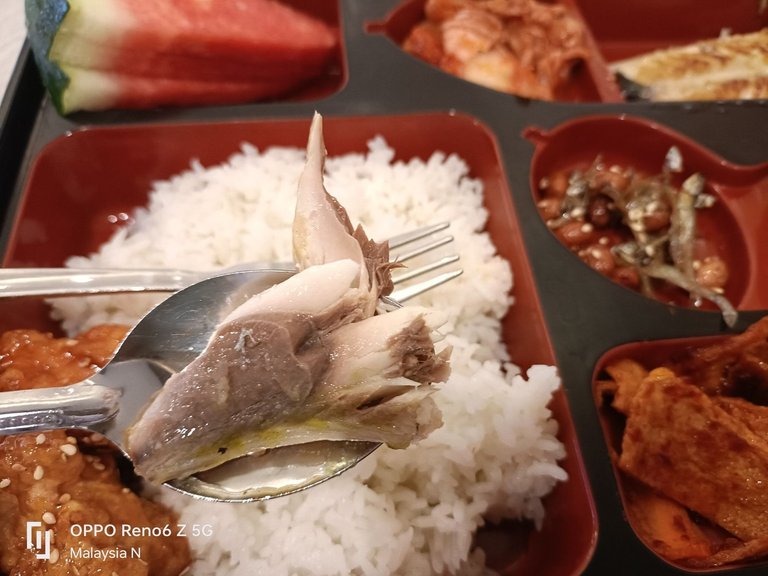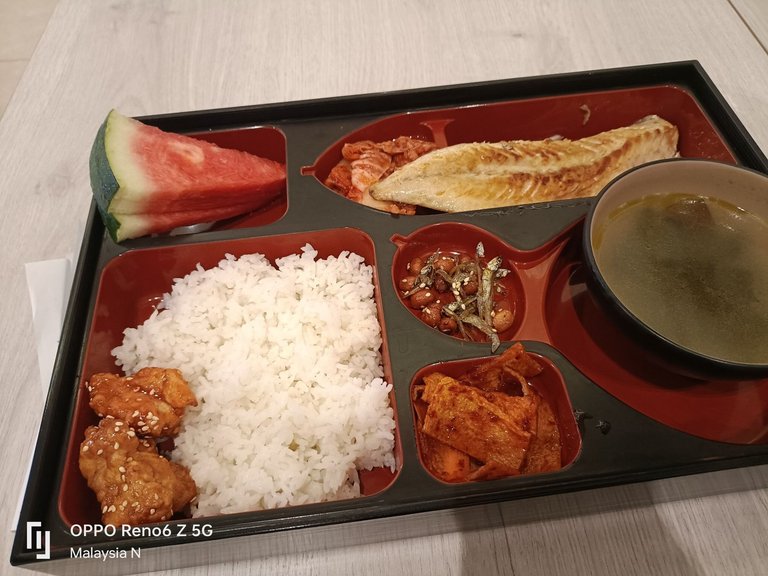

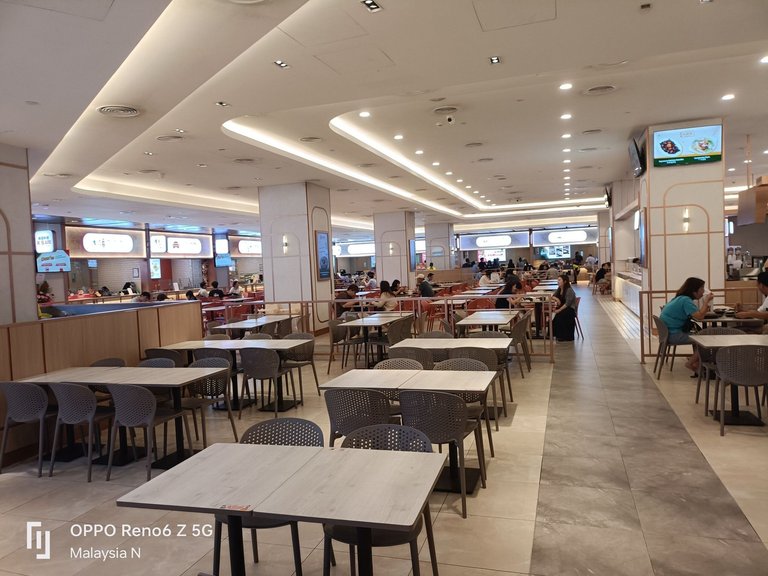
Today, I revisited the Food Place food court, located at Pavilion Mall. The food court is located beside the Oriental Kopi Restaurant.
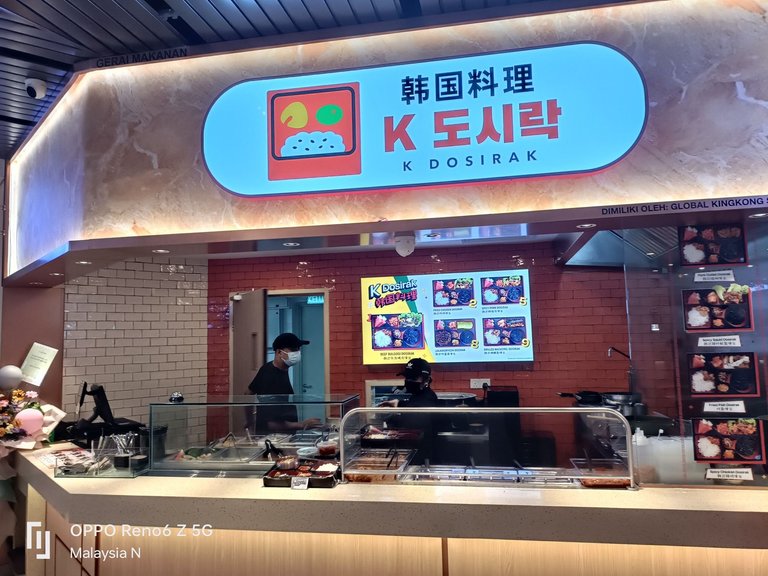
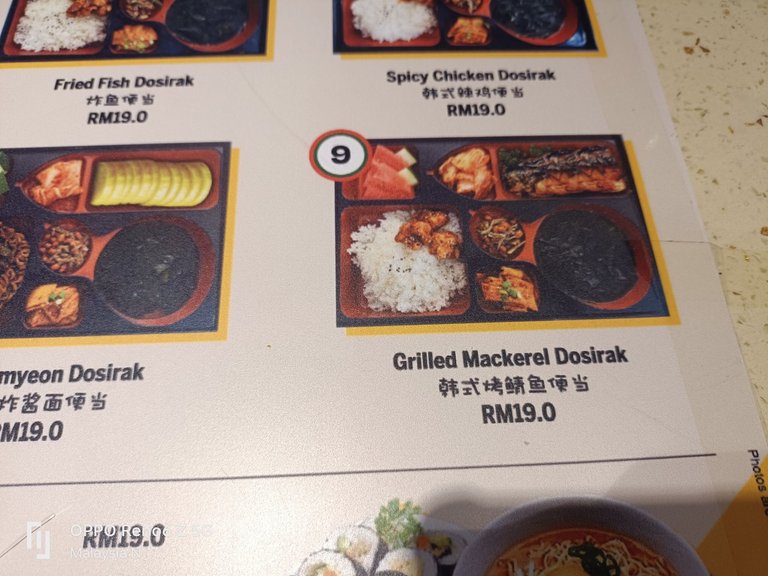
This time I ordered Grilled mackerel dosirak from the K Dosirak stall, it cost RM19.00 per box. The main dish is served in a Korean-style bento box. It comes with Grilled Mackerel, Steamed White rice, Kimchi, Seasoned dried anchovies with peanuts, braised fish cake (eomuk bokkeum), a few slices of watermelon and a side of seaweed soup. There is a few Korean fried chicken topped with sesame seeds, which were kindly given for free by the boss and is not part of the standard set.
“Dosirak” (도시락) is the Korean term for a packed lunch or lunchbox. Traditionally, dosirak was prepared at home by parents for schoolchildren or workers. It usually contains rice, a main protein, and several side dishes (banchan), making it a well-rounded, portable meal. Today, commercial dosirak has evolved into a convenient, restaurant-style offering that balances variety and nutrition, popular in Korea and across Asia.
The concept likely took influence from Japanese bento during the Japanese occupation of Korea (1910–1945), but Korea has deeply localised it with ingredients like kimchi, gochujang-seasoned meat, and seaweed soup. smoky "breath of the wok." Even pan-fried shrimp done with batter are often tossed at high heat at the end to absorb a touch of wok hei — a technique not just for flavour, but also prestige in Cantonese kitchens.
Mackerel (고등어, godeungeo) is a popular fish in Korean cuisine due to its rich flavour, affordable price, and high nutritional value (rich in omega-3 fatty acids). Grilled is one of the most common preparations, often eaten with rice and kimchi at home or in a dosirak.

